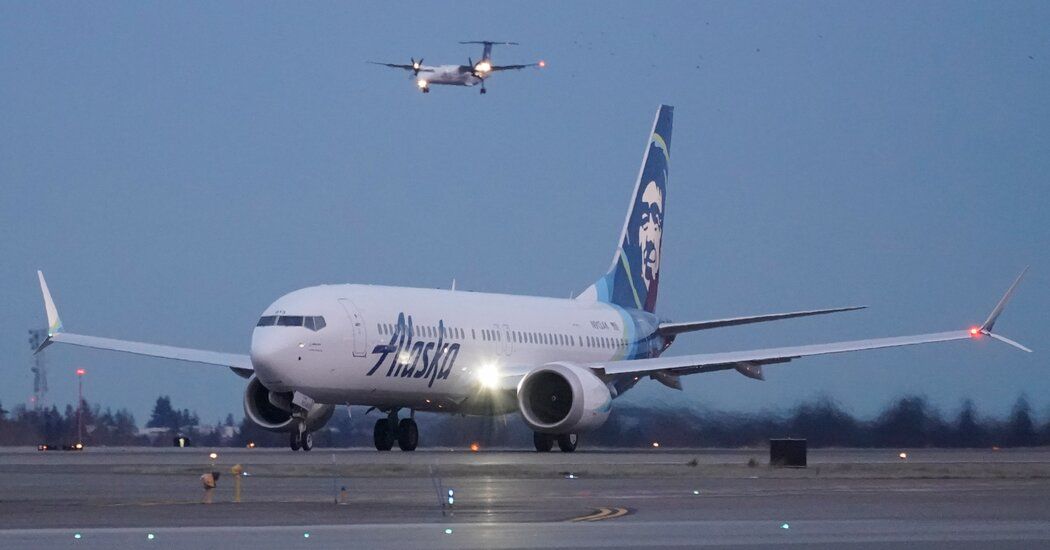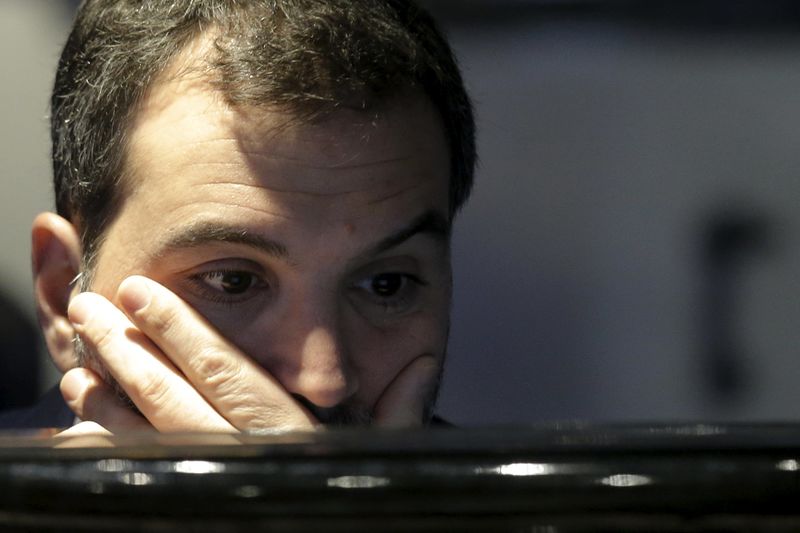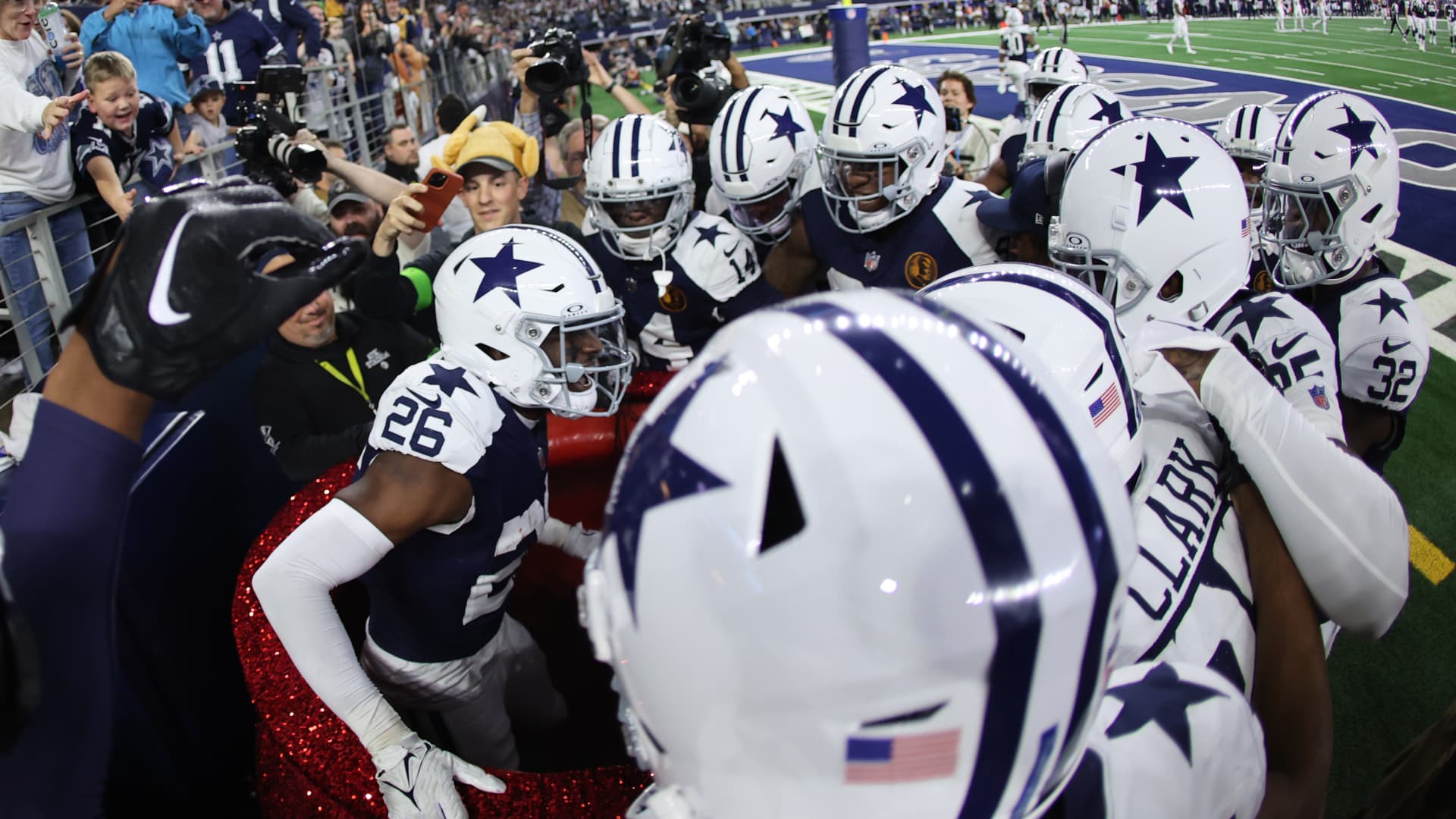An emergency landing Friday of an Alaska Airlines Boeing 737 Max 9 plane in Portland, Oregon, led the airline to ground dozens of similar models of the plane in its fleet. But it also raised troubling new questions about the safety of a cargo plane design beset by years of problems and multiple fatal accidents.
No one was seriously injured in Friday’s incident. The plane returned to the Portland airport shortly after the fuselage broke apart in mid-air, leaving a door-sized hole in the side of the plane.
Within hours of the episode, Alaska Airlines said it would ground all 65 Boeing 737 Max 9 planes in its fleet until mechanics could carefully inspect each plane.
The Federal Aviation Administration and the National Transportation Safety Board also said they were investigating the cause of the incident. Boeing acknowledged the incident in a brief statement and said the company had a technical team “ready to support the investigation.”
And while the particular glitch that caused Friday’s scare seemed unique, Boeing’s 737 Max planes have perhaps the most troubling history of any modern aircraft currently in service.
What happened on Friday?
Alaska Airlines Flight 1282, carrying 171 passengers and six crew members bound for Ontario, California, made an emergency landing at Portland Airport on Friday night, 20 minutes after takeoff.
Passengers on the flight reported hearing a loud sound before realizing that a section of the fuselage had opened in mid-air.
In the minutes before the emergency landing, with oxygen masks hanging from the ceiling and the wind howling through the gaping hole in the wall, passengers could not hear the urgent announcements made over the public address system.
The plane involved in Friday’s incident was virtually new by commercial airline standards. It was first recorded in November and only recorded 145 flights.
What is the history of the 737 Max?
Two crashes involving Boeing 737 Max 8 aircraft killed a total of 346 people in less than five months in 2018 and 2019. Both crashes were later linked to a faulty sensor and device, known as MCAS, that overrode pilot commands. .
Those crashes led to the global grounding of Boeing 737 Max aircraft, parking hundreds of planes on runways around the world for nearly two years as engineers worked to identify and resolve the problem so regulators could recertify the planes.
The first accident took place in October 2018, when a passenger plane carrying 189 people from Jakarta, Indonesia, crashed into the Java Sea just minutes after takeoff. Four months later, another 737 Max, flown by Ethiopia Airlines, crashed just after takeoff on its way to Addis Ababa, killing all 157 people on board, including the flight’s eight crew members.
Days later, President Donald J. Trump announced that U.S. regulators would temporarily suspend all flights of the Boeing 737 Max, as investigators — and Boeing — sought to determine how a software system that was supposed to make the plane safer played a role. role in disasters. .
U.S. regulators were among the last to quash the model, but they did so after pressure mounted and as 42 other countries took drastic measures to prevent more accidents.
Reports by The New York Times and others eventually revealed that competitive pressure, flawed design and problematic oversight had played a role in the troubling story of the plane, Boeing’s best-selling plane in history, and one with hundreds of thousands of millions of dollars in pre-orders from airlines. all over the world when he was punished.
What were the consequences?
Boeing agreed to pay $2.5 billion in a settlement with the Justice Department in 2021 to resolve a criminal charge of conspiracy to defraud the Federal Aviation Administration, which regulates the company and evaluates its planes.
In 2022, Boeing paid $200 million more in a settlement with U.S. securities regulators over allegations that the company had misled investors by suggesting human error was to blame for the two deadly crashes and ignoring public concerns. company on the plane.
When the planes were recertified, 20 months after the crashes in Indonesia and Ethiopia, Boeing estimated that the crisis had cost the company $20.7 billion.
Which airlines use the 737 Max 9?
As part of Boeing’s single-aisle 737 Max series, the Max 9 can carry up to 220 passengers, depending on its seating configuration. United Airlines has 79 Max 9s in service, the most of any airline, according to Cirium, an aviation analytics company. In total, there are 215 Max 9 aircraft in service worldwide, Cirium said. United and Alaska Airlines have about a third of them.
Other companies flying the Max 9 include Panama’s Copa Airlines and Aeroméxico in America, Kazakhstan’s SCAT Airlines, Iceland Air, Turkish Airlines and FlyDubai.
A FlyDubai spokesperson said the three 737 Max 9 aircraft in its fleet completed its necessary safety checks over the past 24 months and that the company was awaiting guidance from Boeing before conducting further inspections.
What happens next?
Major aviation safety incidents, including those that do not cause injuries or loss of life, typically trigger immediate reviews by regulators in the United States, the European Union and China.
Safety investigations are typically conducted by officials from the country where the incident occurred, in cooperation with officials from the country where the aircraft was manufactured.
Investigators analyze everything: the design of the plane; its manufacturing, maintenance and inspection history; climate; air traffic control decisions; and flight crew actions. They look for causes of an incident and lessons for aviation safety.
In the case of the Alaska Airlines incident, the plane was manufactured in the United States and lost a section of the fuselage while flying in the United States. Therefore, the National Transportation Safety Board will be the primary agency responsible for investigating the incident.
Security investigations can take many months. They involve technical experts from the government, the airline that operated the plane, unions, and the plane manufacturer (in this case, Boeing).
The safety board consults closely with the Federal Aviation Administration, which certifies the airworthiness of aircraft. If evidence emerges that an aircraft defect contributed to a safety incident, the FAA may order the model to be grounded until inspections or repairs are made.
The FAA does not need to wait for the safety board’s report before deciding whether to ground a model airplane or order immediate inspections. Airlines typically rush to check their planes as soon as they know what to look for.
What does Alaska Airlines’ flight suspension mean for air travelers?
The grounding of one of the industry’s main workhorses, until now limited only to Alaska Airlines planes, could put pressure on travelers, as airlines sometimes have to cancel flights because they lack the plane to replace the model. on land.
In the case of Alaska Airlines, the 65 737 Max 9s that are grounded awaiting inspection represent 28 percent of the company’s Boeing 737 aircraft fleet. The company also flies the smaller Embraer E175, but with less than half the seats of the Boing 737, it is unlikely to be able to take over.









